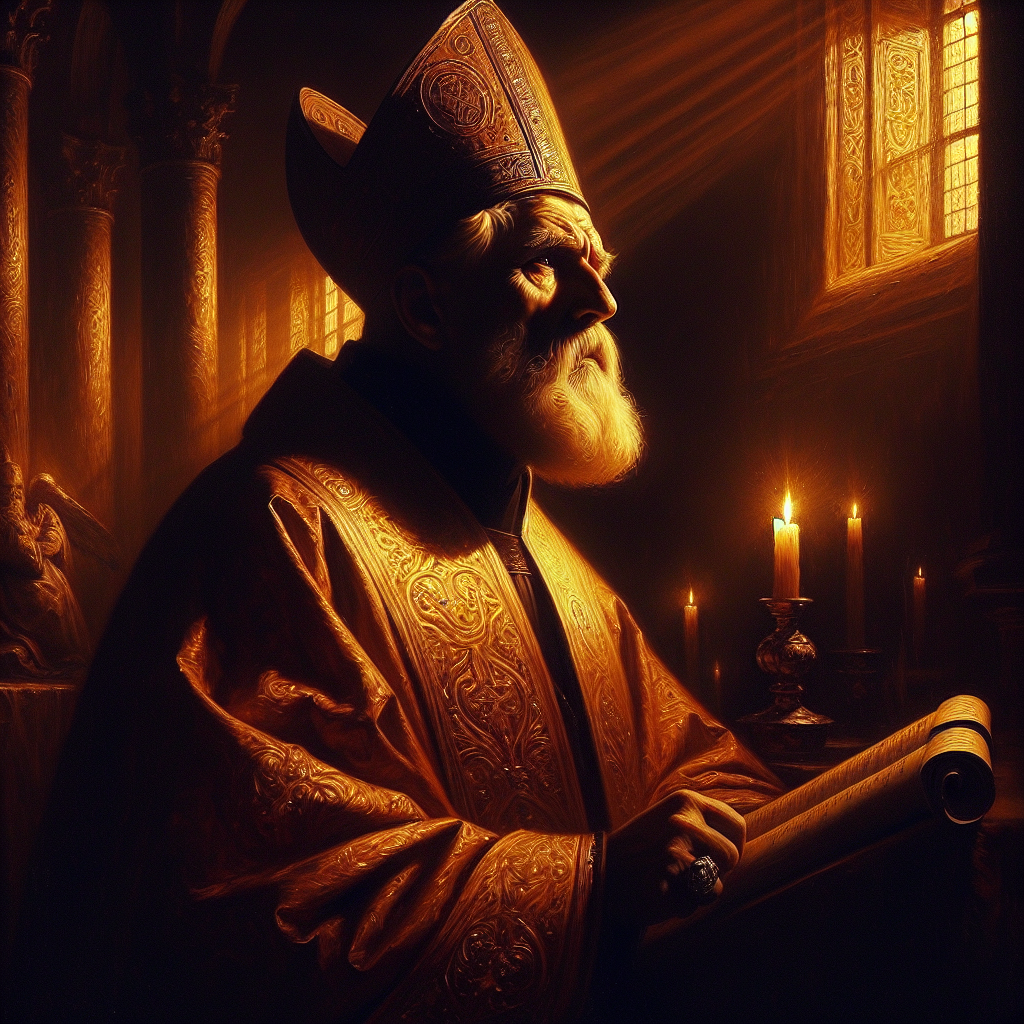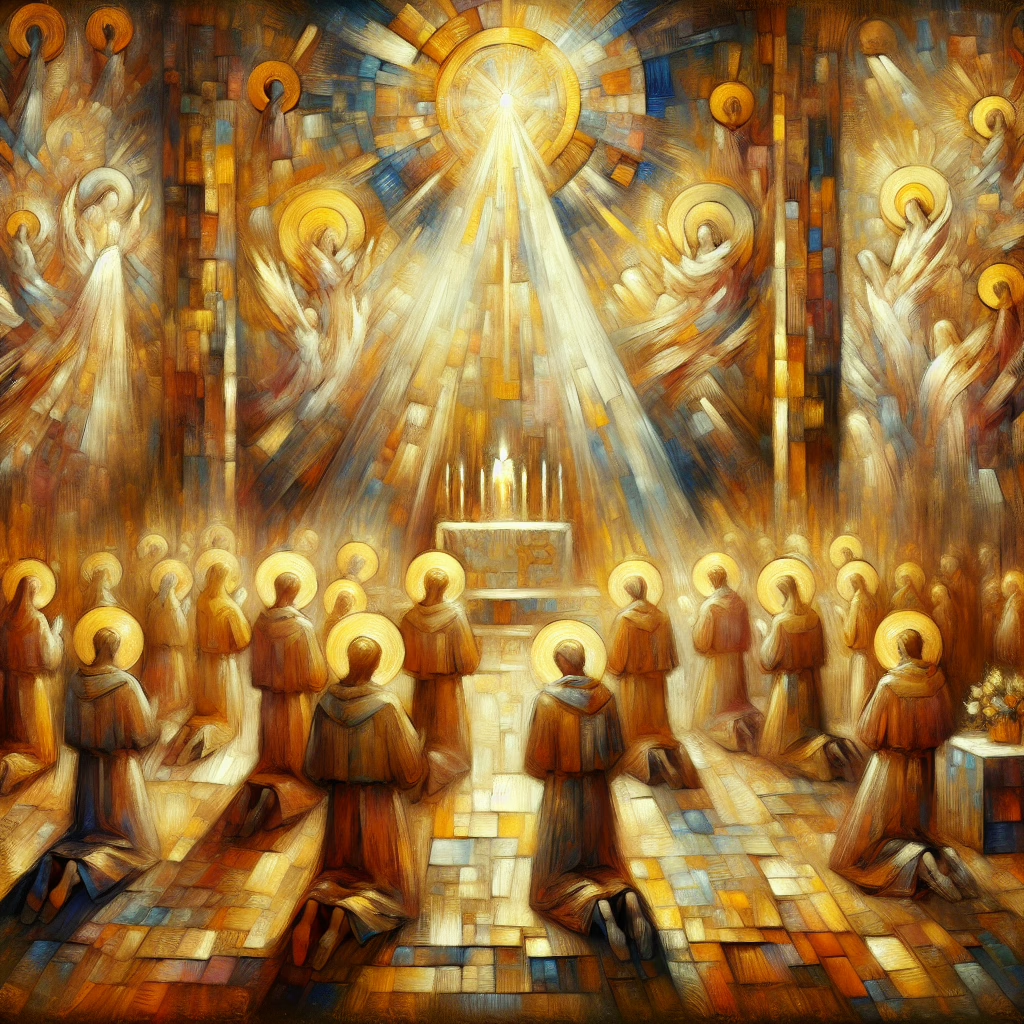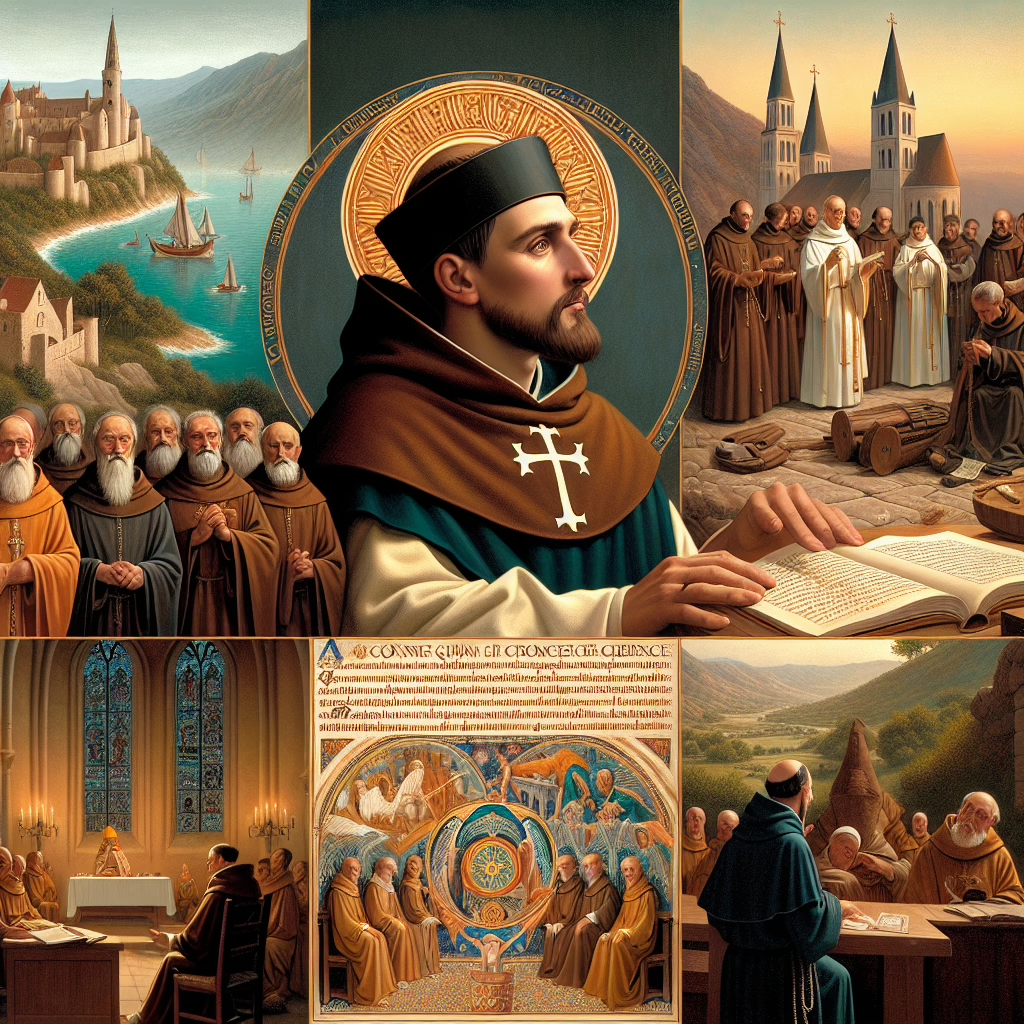St. Peter Damian: A Beacon of Reform in the Catholic Church
Introduction: The Life of St. Peter Damian
"In a world plagued by corruption, one man's vision for reform illuminated the path for generations." These words encapsulate the spirit of St. Peter Damian, a pivotal figure in the 11th-century Catholic Church. Revered as a Bishop and Doctor of the Church, St. Peter Damian’s life is a testament to holiness amid adversity. From his early struggles to significant ecclesiastical reforms and profound theological teachings, his journey offers a timeless appeal for reform and integrity within the Church.
1. Early Life and Spiritual Awakening
1.1 Challenging Beginnings
St. Peter Damian was born in 1007 in Ravenna, Italy, into a world fraught with challenges. Rejected by his mother, he found love and guidance under the care of his elder brother, Damiano, who played a crucial role in his spiritual upbringing. This familial background was fundamental in shaping his resilient faith and unwavering dedication to reform. In Peter's early years, we witness the transformative power of family in nurturing religious vocations, a theme echoed in the journey of many saints. His early life reflected the Church's interconnectedness, where family and faith paths intertwine to pave the way for spiritual awakening.
1.2 Monastic Life: A Radical Choice
Peter's calling led him to the monastic life, a radical decision in response to the Church’s moral and structural decline. Entering the Camaldolese Order, he embarked on a mission to transform Fonte Avellana. His tenure as prior was marked by rigorous monastic reform, heralded as a model emphasizing prayer, asceticism, and communal living. This period underscored the 11th-century thirst for a return to foundational monastic ideals, thus cementing Peter's role in the broader narrative of Church renewal.
2. Reforms and Challenges in the Church
2.1 Advocating for Apostolic Poverty and Clerical Celibacy
The 11th-century Church grappled with issues like simony and clerical celibacy, and St. Peter Damian rose as a formidable force against these corruptions. Advocating for apostolic poverty and upholding clerical celibacy, he collaborated with reformers like Pope Gregory VII. As Pope Gregory VII eloquently stated, "He who does not eliminate the root will never destroy the weeds," a sentiment that resonated with Peter's fierce advocacy for reform. Their partnership was instrumental in the wider papal reform movements, which sought to restore the Church's spiritual integrity.
2.2 Key Missions and Ecclesiastical Conflicts
Peter’s ecclesiastical diplomacy was epitomized in missions to Milan and Cluny, resolving conflicts with assertive grace. His diplomatic endeavors played a significant role in the investiture controversy with Emperor Henry IV, advocating for papal authority and ecclesiastical independence. These missions were not just about diplomacy; they were pivotal moments in championing the Church's moral core during a turbulent era.
3. Miracles and Divine Interventions
3.1 The Eucharistic Miracle
A significant event in Peter’s life was the Eucharistic miracle of 1050, where a Host was miraculously transformed. This phenomenon highlighted the sacredness of the Eucharist, enriching Peter’s spiritual devotion. It serves as a reminder of the centrality of Eucharistic devotion in Catholic teachings, urging deeper reverence for the sacrament that lies at the heart of Catholic worship.
3.2 Other Notable Miracles and Events
Beyond the Eucharistic miracle, other divine interventions peppered Peter's life, reinforcing his teachings on faith. These miracles served as potent reminders of the divine hand at work, fortifying his call for unwavering faith and devotion. It is through these signs that the Church witnessed the legacy of miracles associated with canonized saints, providing a vibrant tapestry of divine faithfulness across generations.
4. Teachings and Legacy of St. Peter Damian
4.1 Spiritual Insights and Writings
St. Peter Damian’s theological writings encapsulate key themes of spiritual integrity, advocacy for deep personal devotion to the Cross, and the Eucharist. His reflections on "spiritual integrity" resonate today, reminding us of the incessant call to align our lives with divine principles. His work is a clarion call for interior renewal, a theme as relevant now as it was in the 11th century.
4.2 Modern Relevance of His Teachings
In an era grappling with issues of clerical integrity, St. Peter Damian’s teachings provide timeless wisdom. Modern followers find encouragement in his reforms, which invite a deeper commitment to clerical purity and accountability within the Church. His life evokes a spiritual paradigm that remains vital in navigating contemporary ecclesial challenges.
Conclusion: The Enduring Influence of St. Peter Damian
In summary, the life of St. Peter Damian, from his early struggles to zealous reforms and spiritual teachings, continues to guide the Church amidst moral quandaries. As we reflect on the legacy of St. Peter Damian, his story compels us to ponder: how might we deepen our own spiritual investments? Encouraged by his example, let us commit to recalibrating our spiritual priorities in the quest for holiness and integrity. Through St. Peter’s life, may we be inspired to foster reform in our spheres and grow in devotion, knit into the tapestry of God’s transformative work in the world.
To explore further insights, consider reading:
- "St. Peter Damian: His Teaching on the Spiritual Life" by Owen J. Blum. Available on Amazon.
- "The Life and Teachings of St. Peter Damian: With 9-Day Novena to St. Peter Damian Doctor of the Church" by William Roberts. Available on Amazon.
These resources provide a deeper dive into the teachings and transformative life of St. Peter Damian, a true beacon of reform in the Catholic Church.





